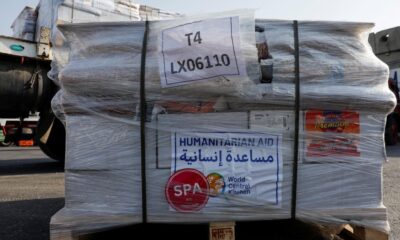Gadgets
Fire likely killed a group of Stone Age humans uncovered in Ukraine

During the Stone Age, some areas of modern Europe were densely populated, with settlements in present-day Ukraine potentially housing 10,000 to 15,000 people. A recent bioarcheological analysis of Neolithic Europeans from an archaeological site near Kosenivka, Ukraine revealed that these individuals, who lived over 5,600 years ago, primarily consumed plants, practiced farming, and may have experienced accidental fatalities, as detailed in a study published in the open-access journal PLOS ONE on December 11.
The inhabitants of this settlement belonged to the Cucuteni-Trypilla culture, known for their pottery and presence across Eastern Europe from approximately 5500 to 2750 BCE. Some of their settlements, termed “mega-sites,” housed up to 15,000 individuals.
Katharina Fuchs, a study co-author and biological anthropologist and archaeologist from Kiel University in Germany, notes, “The Trypilla societies were the first successful farmers in this area, cultivating cereals and legumes, managing woodlands, and raising livestock. Their settlements suggest complex sociopolitical systems to organize life in such megasites.”
Despite the cultural artifacts left by the Trypillia, few human remains have been discovered, leaving many aspects of their lives, including burial practices, unknown.
In a recent study, Fuchs and a team of researchers examined a settlement site near Kosenivka, Ukraine, where 50 human bone and tooth fragments were discovered. These remains, found within a house, likely belonged to at least seven individuals of varying ages and genders who resided in the dwelling. Four individuals showed signs of heavy charring, prompting the team to investigate the causes of these burns.
The burnt bone fragments were concentrated in the center of the house, leading to the hypothesis that the individuals perished in a house fire. Further analysis suggested that the burning occurred shortly after death and was accidental, with some possibly succumbing to carbon monoxide poisoning even if they managed to escape the blaze.
[ Related: Europe’s oldest human-made megastructure may be at the bottom of the Baltic Sea. ]
Radiocarbon dating revealed that one individual died approximately 100 years after the fire, suggesting no direct link between their death and the blaze. Additionally, two individuals displayed unhealed cranial injuries, raising questions about potential violence-related deaths.
Chemical analysis of the bone and tooth fragments shed light on the dietary habits of these individuals, with tooth wear patterns indicating consumption of grains and plant fibers for cleaning purposes.
Fuchs explains, “These Trypillian societies primarily relied on a plant-based diet and raised cattle for milk production and field fertilization.”


-

 Destination8 months ago
Destination8 months agoSingapore Airlines CEO set to join board of Air India, BA News, BA
-

 Breaking News10 months ago
Breaking News10 months agoCroatia to reintroduce compulsory military draft as regional tensions soar
-

 Gadgets3 months ago
Gadgets3 months agoSupernatural Season 16 Revival News, Cast, Plot and Release Date
-

 Tech News12 months ago
Tech News12 months agoBangladeshi police agents accused of selling citizens’ personal information on Telegram
-

 Productivity11 months ago
Productivity11 months agoHow Your Contact Center Can Become A Customer Engagement Center
-

 Gadgets3 weeks ago
Gadgets3 weeks agoFallout Season 2 Potential Release Date, Cast, Plot and News
-

 Breaking News10 months ago
Breaking News10 months agoBangladesh crisis: Refaat Ahmed sworn in as Bangladesh’s new chief justice
-

 Toys12 months ago
Toys12 months ago15 of the Best Trike & Tricycles Mums Recommend





















